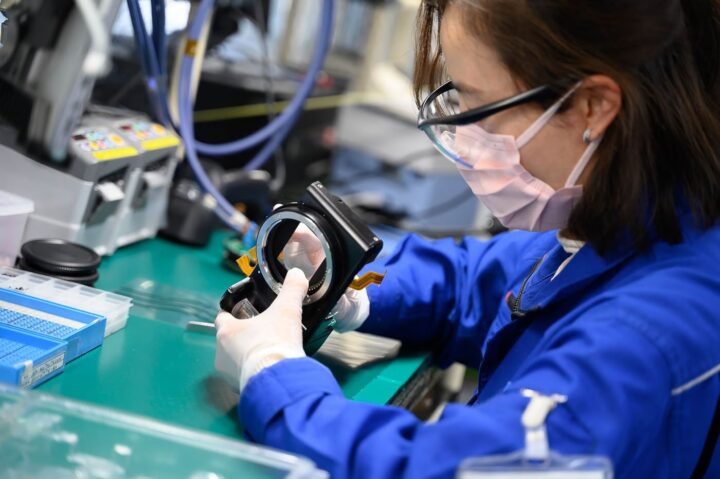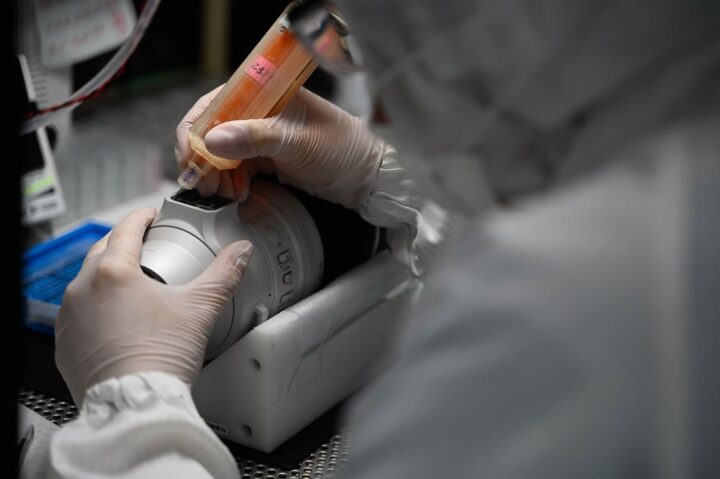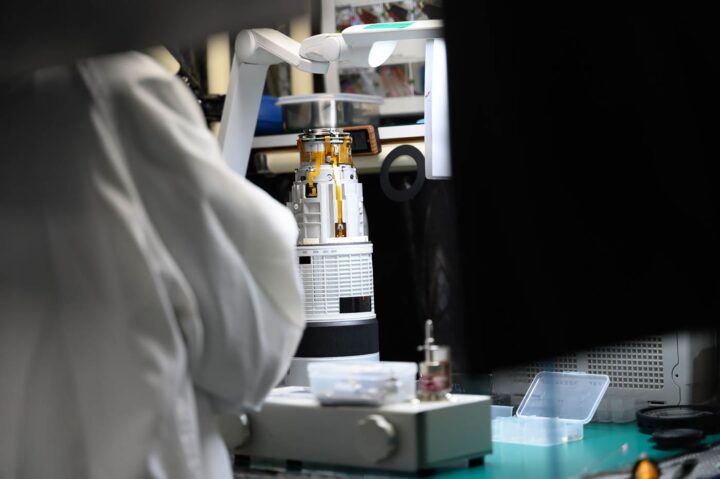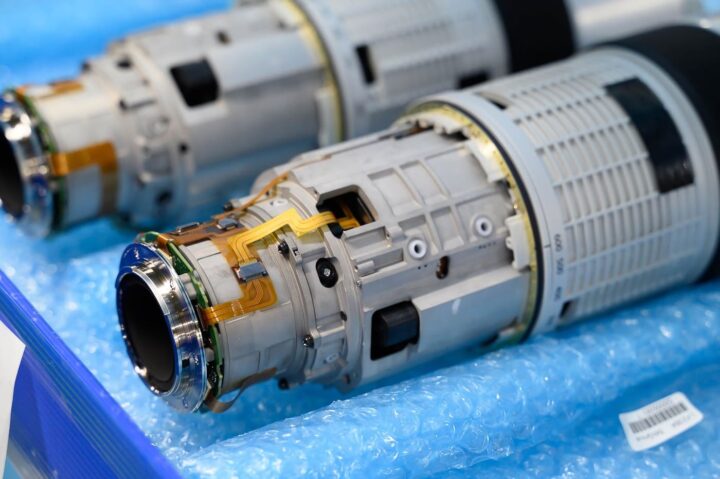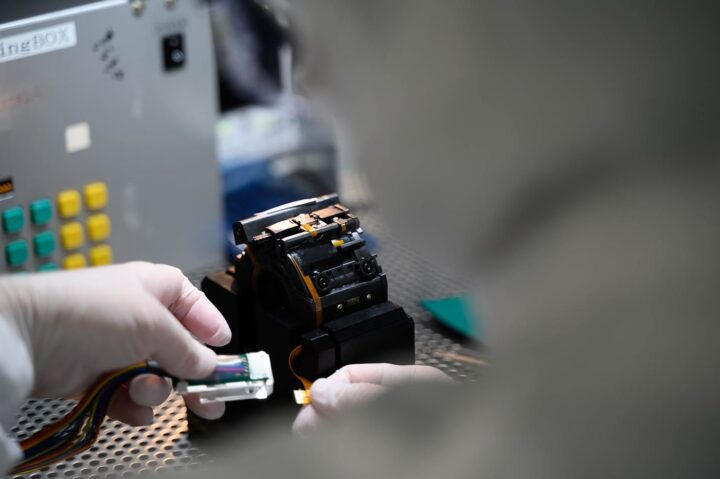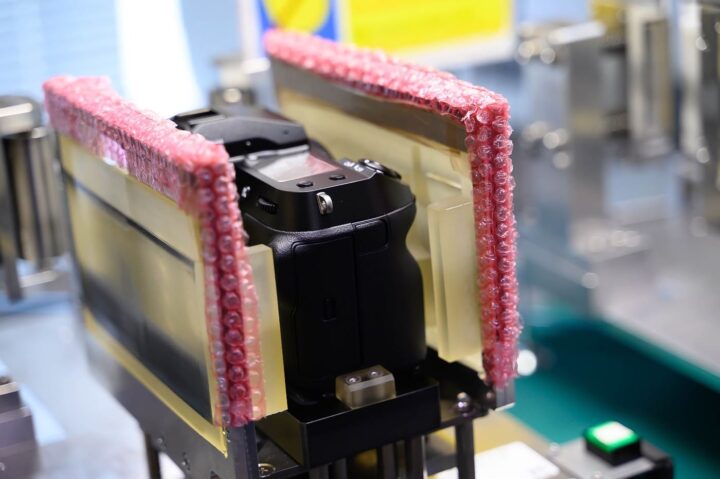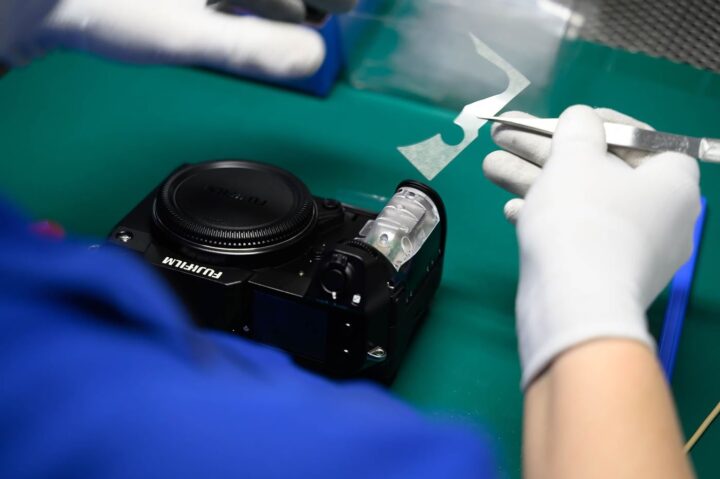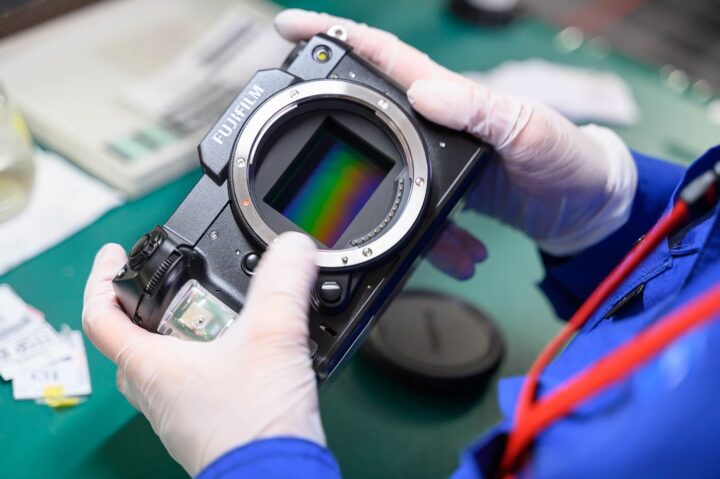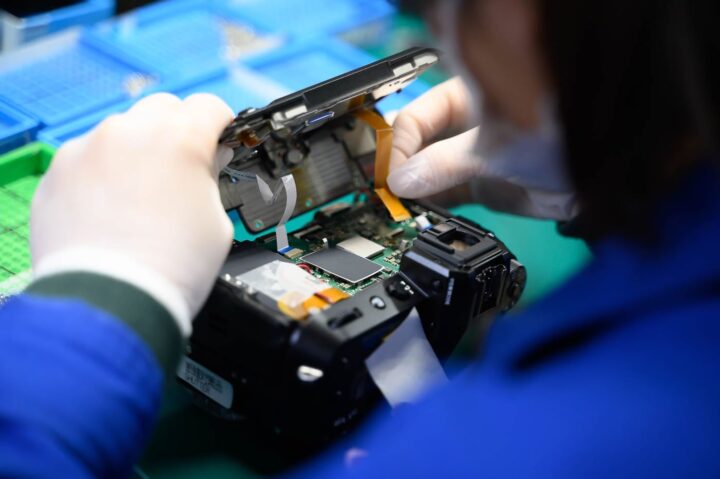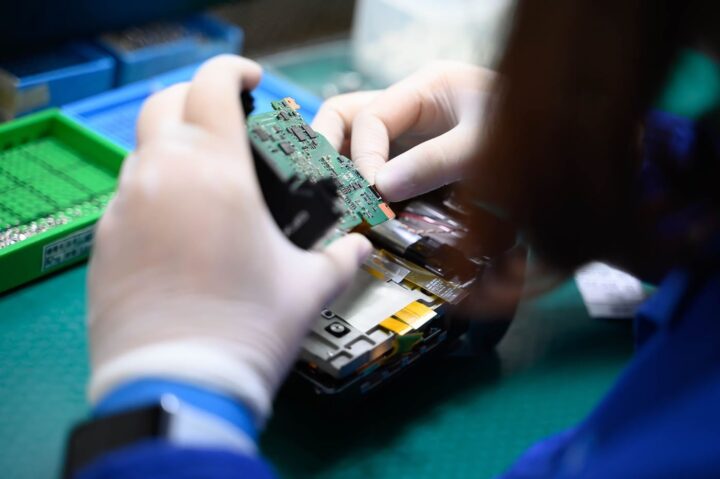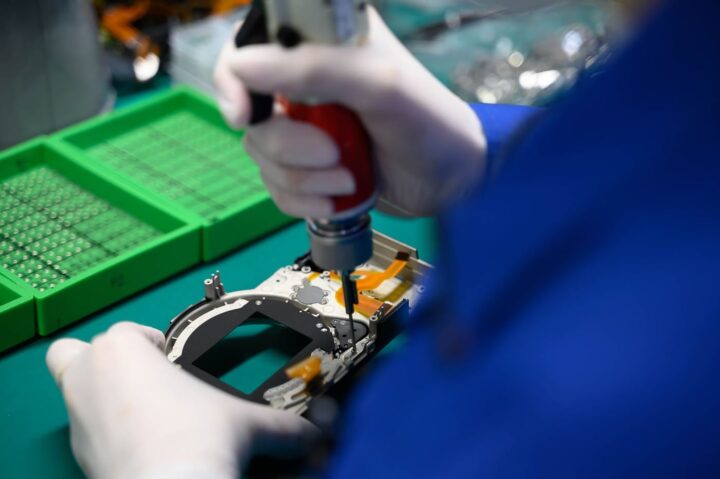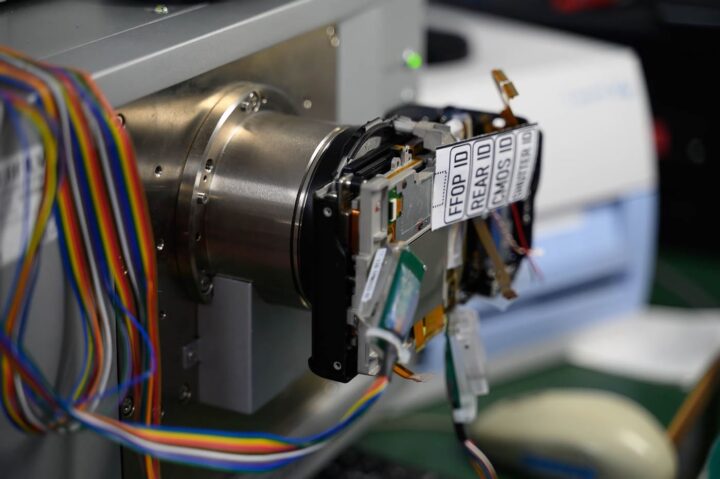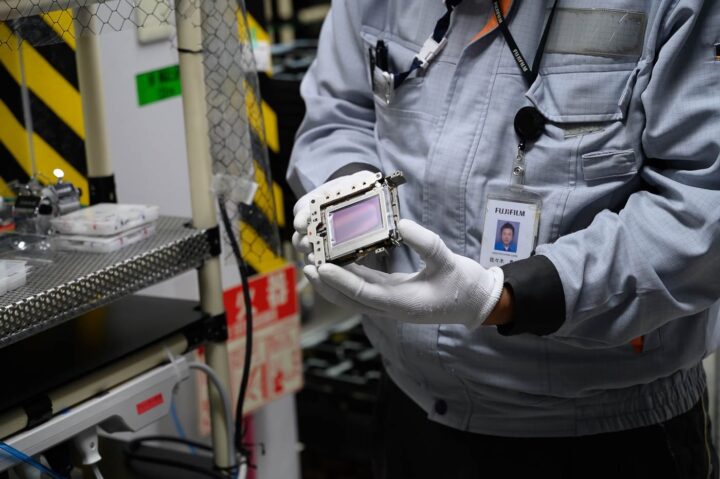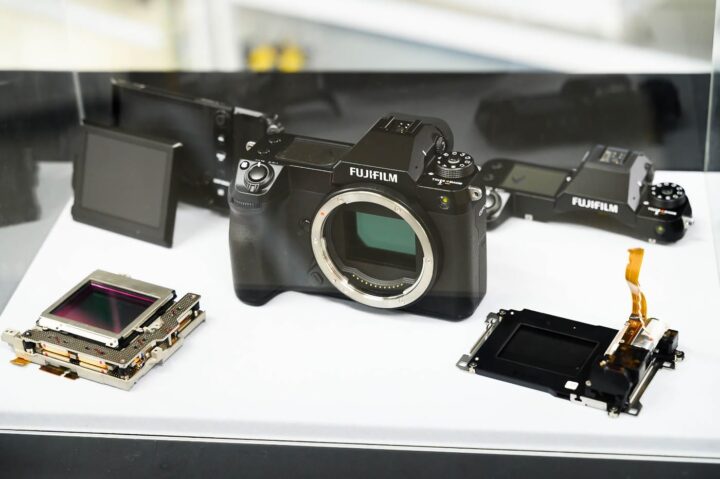Fujifilm Factory Tour: Meet Fujifilm’s Most Complex Gear to Manufacture and How Adjustment is Key to Image Quality
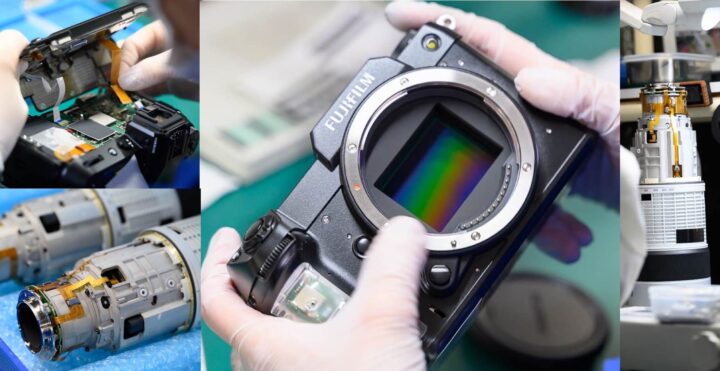
The French website Phototrend had the opportunity to visit the Fujifilm factory in Taiwa, Japan, which where many premium Fujifilm gear is made, but not only premium. For example, also Fujifim’s oldest X mount lens, the legendary Fujinon XF35mm F1.4 R is assembled here.
In this tour, Fujifilm will also tell you which is the most complex gear to manufacture. Spoiler: it’s this beast here, which consists of over 1,000 pieces!!!
There is lots of interesting stuff to read and see, but I found one sentence particularly interesting: “adjustment is the key to image quality“.
So while the assembly takes time and is indeed complex, all the micro-adjustments made during and after the assembly are crucial to ensure a consistent and high quality product.
Down is a quick summary where you can read all the details as well as some images.
- Fujifilm GFX100S – save $500: BHphoto / AmazonUS / Adorama / Moment
- Fujinon XF 150-600mm f/5.6-8: BHphoto / AmazonUS / Adorama / Moment
- X-H2 + XF150-600mm – save $400: BHphoto / AmazonUS / Adorama
- X-H2S + XF150-600mm – save $400: BHphoto / AmazonUS / Adorama
- X-H2 + XF16-80mm + XF150-600mm – save $400: BHphoto / AmazonUS / Adorama
Factory Tour
The Factories
- Fujifilm has 4 factories in Japan
– Mito factory for molding of the glasses
– Morigane factory for the polishing of lenses
– Sano factory manufactures barrels for lenses
– Taiwa factory is responsible for the complex assembly of all these pieces. Also cameras like the GFX100S and X100V are made here - there are also factories in the Philippines (polishing and assembly of certain lenses) and in China (assembly of some parts for lenses as well as cameras like the X-T5)
- Fujifilm is one of the few photo manufacturers with its own factories with a complete lens manufacturing process
- Taiwa plant has different roles, including quality control
- all pre-production lenses are still made in Taiwa, mass production is moved to other factories (under strick Fujifilm quality control)
- the quality of products made in China is the same of the one made in Japan
Fujifilm GFX100S
- it’s important to ensure the alignment of the sensor and the IBIS system
- these checks are often automated, thanks to machines and robots designed in-house by Fujifilm
- unity between man and machine
- there are many robotic systems to automate or improve assembly and quality control, assisted by operators on the assembly line
- the steps for assembling the GFX are often manual
- once the GFX100S is assembled, they test the camera, in particular to verify the correct alignment of the sensor on the focal plane, as well as the correct calibration of the stabilization. It’s an automated process, with the device taking a series of photos which are then analysed by computer. If necessary, micro-settings are applied automatically
- a press makes it possible to check that all the rubbers are properly fixed
XF 150-600 mm f/5.6-8 – Fujifilm’s most complex lens assembly
- rigorous dust checks before entering the facility
- as soon as dust is found, it is sent directly to the laboratory to find the source and change the processes to avoid it
- the XF150-600 consist of more than 1,000 pieces (from lenses to the smallest screw)
- a machine assists the operator to assemble the lenses into a barrel. If this step were carried out by hand, variations in alignment would be observed
- at each step, a manual check of the lenses is necessary
- the lens (without barrel) is then placed on machines for a precise adjustment on MTF chart. Here, everything is automated, but this step can take up to 1 hour per objective, as needed
- if the lens is OK, then external parts are added
- a machine makes a final automated check, in addition to a visual check by a person
Q&A with Fujifilm Managers
- XF150-600mm is the most complex product to assemble, because its technical design is very advanced
- this lens has more than 20 optical elements that must fit into the most compact barrel possible, so the slightest variation is not acceptable in terms of quality
- more generally, manufacturing GFX lenses is more complex than XF lenses because the expected image quality is higher in terms of resolution
- the most complex products, such as GFX bodies and lenses such as the 150-600mm are made in Japan
- the Taiwa plant then designs all the processes to ensure that the quality of production is maintained also in their other factories
- if a high level of competence and inspection is required, then those products will be made in Japan
- Fujifilm has still shortages in terms of semiconductors
- the sensors of GFX cameras are very sensitive in terms of alignment, so Fujifilm designed an automated system for adjustment
- it’s the same for GF or XF lenses: adjustment is the key to image quality
- Fujifilm has set up automated systems based on algorithms to reduce the duration of this adjustment step, which is very important to Fujifilm
- the majority of the assembly steps are carried out by hand by men and women
You can read the full article and see all images at Phototrend here.
- Fujifilm GFX100S – save $500: BHphoto / AmazonUS / Adorama / Moment
- Fujinon XF 150-600mm f/5.6-8: BHphoto / AmazonUS / Adorama / Moment
- X-H2 + XF150-600mm – save $400: BHphoto / AmazonUS / Adorama
- X-H2S + XF150-600mm – save $400: BHphoto / AmazonUS / Adorama
- X-H2 + XF16-80mm + XF150-600mm – save $400: BHphoto / AmazonUS / Adorama


